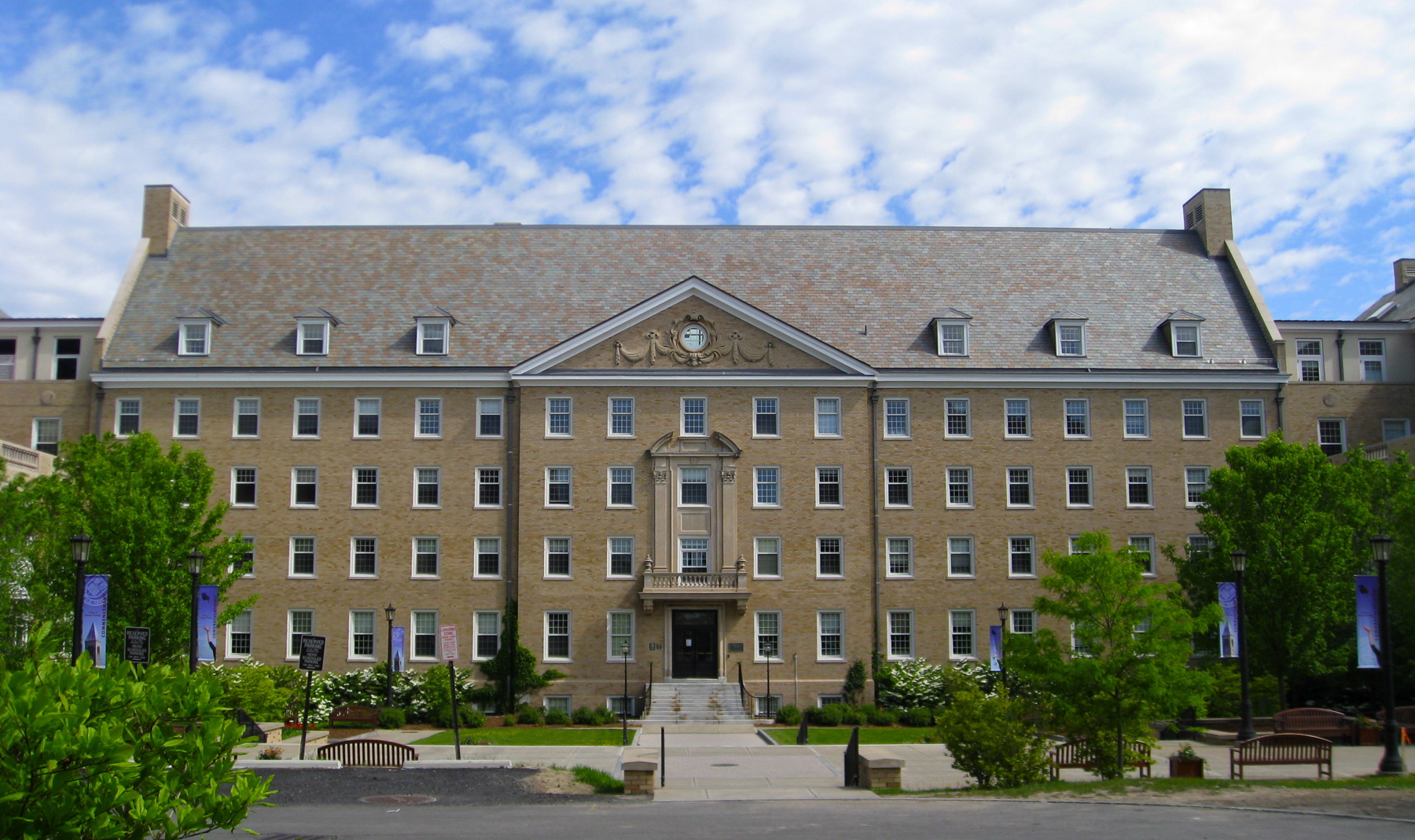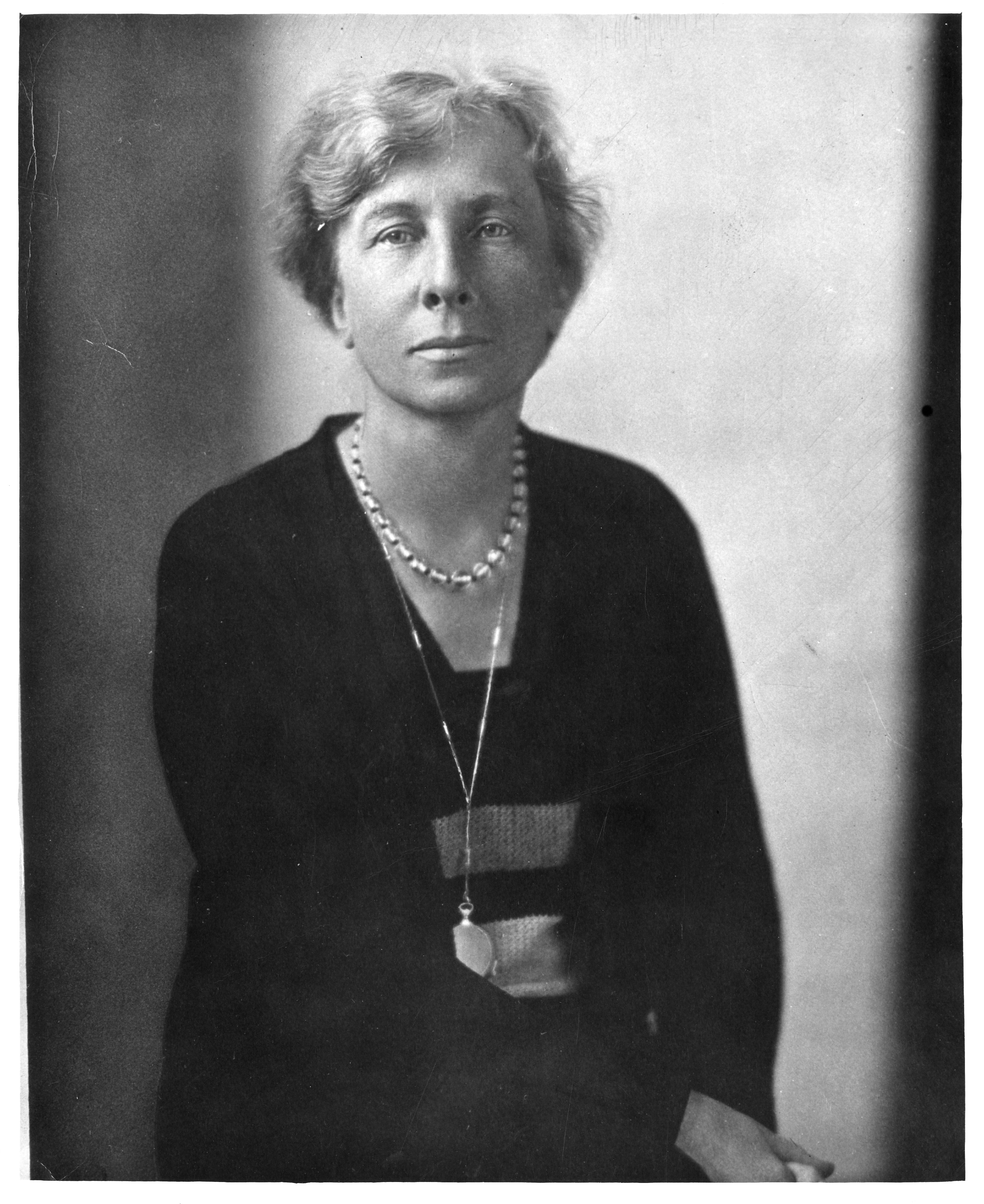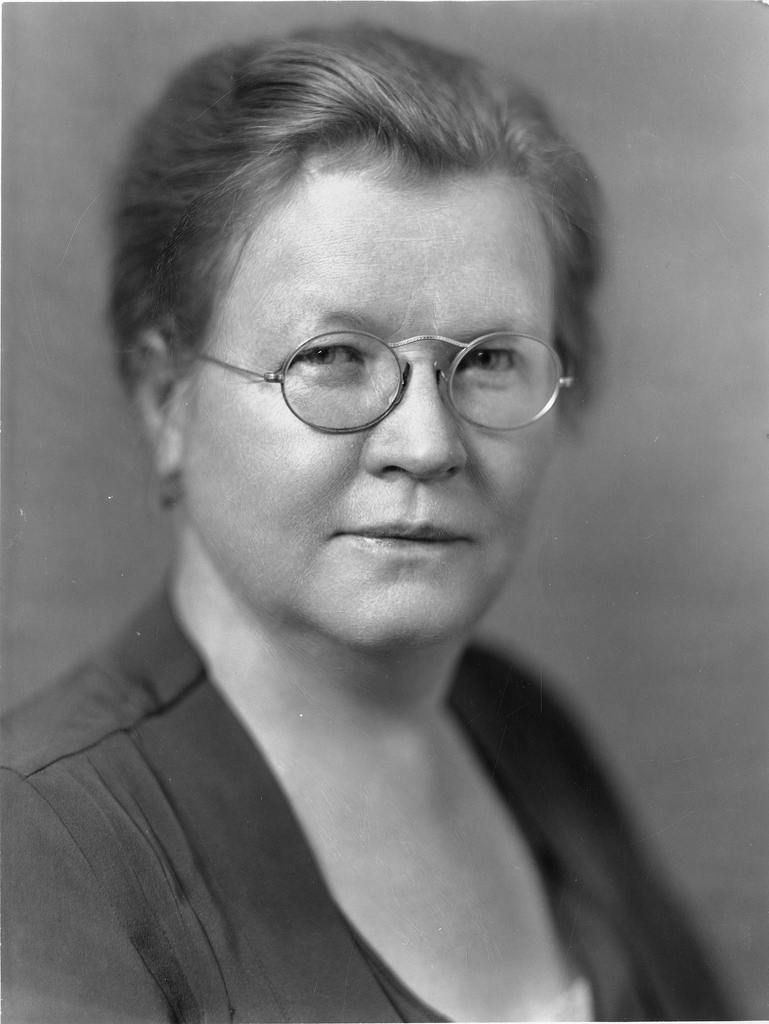|
The Secret History Of Home Economics
''The Secret History of Home Economics: How Trailblazing Women Harnessed the Power of Home and Changed the Way We Live'' is a 2021 nonfiction book by journalist Danielle Dreilinger. The book explores how different areas of skills, knowledge, and investigation were brought together under the umbrella of "home economics", and how the field's focus and reputation have changed over the decades in the United States. Summary In ''The Secret History of Home Economics'', Dreilinger, education reporter for ''The Times-Picayune'' for five years, examines how the focus of home economics swung back and forth between being a method for women to obtain scientific education to vocational training for future wives and mothers. With the expansion of colleges after the Civil War and particularly the land-grant universities which were coed, leaders in education favored curricula focused on vocational education. "Domestic science" courses were offered for women at a number of schools during the la ... [...More Info...] [...Related Items...] OR: [Wikipedia] [Google] [Baidu] |
Home Economics
Home economics, also called domestic science or family and consumer sciences, is a subject concerning human development, personal and family finances, consumer issues, housing and interior design, nutrition and food preparation, as well as textiles and apparel. Much less common today, it was and is most commonly taught in high school. Home economics courses are offered around the world and across multiple educational levels. Historically, the purpose of these courses was to professionalize housework, to provide intellectual fulfillment for women, and to emphasize the value of "women's work" in society and to prepare them for the traditional roles of sexes. Family and consumer sciences are taught as an elective or required course in secondary education, as a continuing education course in institutions, and at the primary level. Beginning as home economics in the United States, the course was a key part of the education system for teaching one the art of taking care of a house ... [...More Info...] [...Related Items...] OR: [Wikipedia] [Google] [Baidu] |
Martha Van Rensselaer
Martha Van Rensselaer (June 21, 1864 – May 26, 1932) was a founding co-director of the College of Home Economics, which led to the establishment of the New York State College of Human Ecology in Ithaca, New York. Van Rensselaer served as an educator and proponent of the application of knowledge to improved quality of life in the home. She called the field of study “domestic science” and focused on key aspects of homemaking. Biography Van Rensselaer was born on June 21, 1864 in Randolph, New York. Her mother was a participant in the women's suffrage and temperance movements, and from her mother, Van Rensselaer learned about the potential of women to influence society. Van Rensselaer graduated from high school and became a teacher. She was elected commissioner of Cattaraugus County, New York, a position typically held by men, from 1893 to 1899.Faculty Biographies: Martha Van Rensselaer" Cornell University Division of Rare & Manuscript Collections. Prior to this appointment ... [...More Info...] [...Related Items...] OR: [Wikipedia] [Google] [Baidu] |
Eleanor Roosevelt
Anna Eleanor Roosevelt () (October 11, 1884November 7, 1962) was an American political figure, diplomat, and activist. She was the first lady of the United States from 1933 to 1945, during her husband President Franklin D. Roosevelt's four terms in office, making her the longest-serving first lady of the United States. Roosevelt served as United States Delegate to the United Nations General Assembly from 1945 to 1952, and in 1948 she was given a standing ovation by the assembly upon their adoption of the Universal Declaration. President Harry S. Truman later called her the "First Lady of the World" in tribute to her human rights achievements. Roosevelt was a member of the prominent American Roosevelt and Livingston families and a niece of President Theodore Roosevelt. She had an unhappy childhood, having suffered the deaths of both parents and one of her brothers at a young age. At 15, she attended Allenswood Boarding Academy in London and was deeply influenced by its ... [...More Info...] [...Related Items...] OR: [Wikipedia] [Google] [Baidu] |
Great Depression
The Great Depression (19291939) was an economic shock that impacted most countries across the world. It was a period of economic depression that became evident after a major fall in stock prices in the United States. The economic contagion began around September and led to the Wall Street stock market crash of October 24 (Black Thursday). It was the longest, deepest, and most widespread depression of the 20th century. Between 1929 and 1932, worldwide gross domestic product (GDP) fell by an estimated 15%. By comparison, worldwide GDP fell by less than 1% from 2008 to 2009 during the Great Recession. Some economies started to recover by the mid-1930s. However, in many countries, the negative effects of the Great Depression lasted until the beginning of World War II. Devastating effects were seen in both rich and poor countries with falling personal income, prices, tax revenues, and profits. International trade fell by more than 50%, unemployment in the U.S. rose to 23% ... [...More Info...] [...Related Items...] OR: [Wikipedia] [Google] [Baidu] |
Leanna Field Driftmier
Leanna Field Driftmier (1886–1976) was an American radio personality and writer based in Shenandoah, Iowa. Driftmier’s daily 30-minute show ''Kitchen-Klatter'' was broadcast around the midwestern United States for five decades. It was the longest-running homemaker show in US radio history. Early life Driftmier was born Leanna Field April 3, 1886 on a farm near Shenandoah. Driftmier was one of seven children. Her sister Jessie Field Shambaugh was a founder of the 4-H movement; her brother Henry Field was a seed company and radio entrepreneur. After graduating from high school in Shenandoah, Driftmier taught school in Essex, Iowa. She moved to California to help care for aging relatives. While in California, Driftmier attended Los Angeles State Normal College, then taught school near San Bernardino for one or two years. On a visit to her hometown she met widower Martin Driftmier. They married June 25, 1913http://www.desmoinesregister.com/article/99999999/FAMOUSIOWANS/50902011/-1/f ... [...More Info...] [...Related Items...] OR: [Wikipedia] [Google] [Baidu] |
Aunt Sammy
Aunt Sammy was a fictional character created by the Bureau of Home Economics of the U.S. Department of Agriculture, for a popular radio show called ''Housekeepers' Chat''. Its target audience was farm wives. The fifteen-minuteJan Holden, Aunt Sammy of the Airwaves, Fireside Companion, October - November 1990, page 40 - 42 radio program was first broadcast on October 4, 1926, and by 1932 194 stations carried it. Though the government-sponsored series lasted until 1946 the Aunt Sammy character was not used after 1934.''Selections From Aunt Sammy’s Radio Recipes and USDA Favorites'', page 1, U.S. Printing Office, 1976 ''Housekeepers' Chat'' Aunt Sammy was the wife of Uncle Sam. Other family members and friends included Ebenezer, an uncle; Billy, a nephew; Percy DeWillington, a fussy eater, and the Nosy Neighbor. In 1927, three women at the USDA collaborated to prepare content for each episode. Fanny Walker Yeatman tested recipes and conducted research on foods; Josephine Hemphi ... [...More Info...] [...Related Items...] OR: [Wikipedia] [Google] [Baidu] |
Gold Medal Flour
General Mills, Inc., is an American multinational manufacturer and marketer of branded processed consumer foods sold through retail stores. Founded on the banks of the Mississippi River at Saint Anthony Falls in Minneapolis, the company originally gained fame for being a large flour miller. Today, the company markets many well-known North American brands, including Gold Medal flour, Annie's Homegrown, Lärabar, Cascadian Farm, Betty Crocker, Yoplait, Nature Valley, Totino's, Pillsbury, Old El Paso, Häagen-Dazs, as well as breakfast cereals under the General Mills name, including Cheerios, Chex, Lucky Charms, Trix, Cocoa Puffs and Count Chocula and the other monster cereals. It is headquartered in Golden Valley, Minnesota, a suburb of Minneapolis. History Washburn-Crosby Company The company can trace its history to the Minneapolis Milling Company, incorporated in 1856. The company was founded by Illinois Congressman Robert Smith, who leased power rights to flour mi ... [...More Info...] [...Related Items...] OR: [Wikipedia] [Google] [Baidu] |
Betty Crocker
Betty Crocker is a brand and fictional character used in advertising campaigns for food and recipes. The character was originally created by the Washburn-Crosby Company in 1921 following a contest in the ''Saturday Evening Post''. In 1954, General Mills introduced the red spoon logo with her signature, placing it on Gold Medal flour, Bisquick, and cake-mix packages. A portrait of Betty Crocker, first commissioned in 1936 and revised several times since, appears on printed advertisements and product packaging. The character was developed in 1920 as a way to give a personalized response to consumer product questions. The name Betty was selected because it was viewed as a cheery, all-American name. It was paired with the last name Crocker, in honor of William Crocker, a Washburn Crosby Company director. The character's image has been updated seven times since her creation, reflecting changes in fashions and hairstyles. Described as an American cultural icon, the image of Be ... [...More Info...] [...Related Items...] OR: [Wikipedia] [Google] [Baidu] |
Kitchen Work Triangle
The areas of akitchen work triangle is a concept used to determine efficient kitchen layouts that are both aesthetically pleasing and functional. The primary tasks in a home kitchen are carried out between the cook top, the sink and the refrigerator. These three points and the imaginary lines between them make up what kitchen experts call the work triangle. The idea is that when these three elements are close (but not too close) to one another, the kitchen will be easy and efficient to use, cutting down on wasted steps. There are exceptions to this rule. In single wall kitchens, it's geometrically impossible to achieve a true triangle, but efficiency can still be achieved through the configuration of the three items, and how far apart they are. History Work on optimizing kitchen layouts was begun in the 1920s by Lillian Moller Gilbreth, an industrial psychologist and engineer, in partnership with the Brooklyn Borough Gas Company. Gilbreth's Kitchen Practical was unveiled in ... [...More Info...] [...Related Items...] OR: [Wikipedia] [Google] [Baidu] |
Lillian Moller Gilbreth
Lillian Evelyn Gilbreth (; May 24, 1878 – January 2, 1972) was an American psychologist, industrial engineer, consultant, and educator who was an early pioneer in applying psychology to time-and-motion studies. She was described in the 1940s as "a genius in the art of living." Gilbreth, one of the first female engineers to earn a Ph.D., is considered to be the first industrial/organizational psychologist. She and her husband, Frank Bunker Gilbreth, were efficiency experts who contributed to the study of industrial engineering, especially in the areas of motion study and human factors. '' Cheaper by the Dozen'' (1948) and '' Belles on Their Toes'' (1950), written by two of their children ( Ernestine and Frank Jr.) tell the story of their family life and describe how time-and-motion studies were applied to the organization and daily activities of their large family. Both books were later made into feature films. Early life and education Lillie Evelyn Moller was born in Oa ... [...More Info...] [...Related Items...] OR: [Wikipedia] [Google] [Baidu] |
Louise Stanley (academic)
The Bureau of Home Economics, later known as the Bureau of Human Nutrition and Home Economics, was a division of the US Department of Agriculture that supported homemaker activities in the early 20th century. The bureau developed recipes, collected information from the burgeoning scientific practice of nutrition, published sewing patterns for homemade clothing, produced radio content like the Aunt Sammy personality, wrote articles for newspapers and magazines, and generally contributed to the adoption of scientific practices in routine household activities. Operating between 1923 and 1962, the bureau supported homemakers through the Great Depression and World War II. History and leadership The bureau has its roots in the Office of Home Economics at the USDA. Established in 1915, the office centralized USDA existing efforts around cooking and nutrition and other home economics topics, and was tasked with disseminating "practical applications of research knowledge" from the USD ... [...More Info...] [...Related Items...] OR: [Wikipedia] [Google] [Baidu] |
United States Department Of Agriculture
The United States Department of Agriculture (USDA) is the federal executive department responsible for developing and executing federal laws related to farming, forestry, rural economic development, and food. It aims to meet the needs of commercial farming and livestock food production, promotes agricultural trade and production, works to assure food safety, protects natural resources, fosters rural communities and works to end hunger in the United States and internationally. It is headed by the Secretary of Agriculture, who reports directly to the President of the United States and is a member of the president's Cabinet. The current secretary is Tom Vilsack, who has served since February 24, 2021. Approximately 80% of the USDA's $141 billion budget goes to the Food and Nutrition Service (FNS) program. The largest component of the FNS budget is the Supplemental Nutrition Assistance Program (formerly known as the Food Stamp program), which is the cornerstone of USDA's ... [...More Info...] [...Related Items...] OR: [Wikipedia] [Google] [Baidu] |





.jpg)


